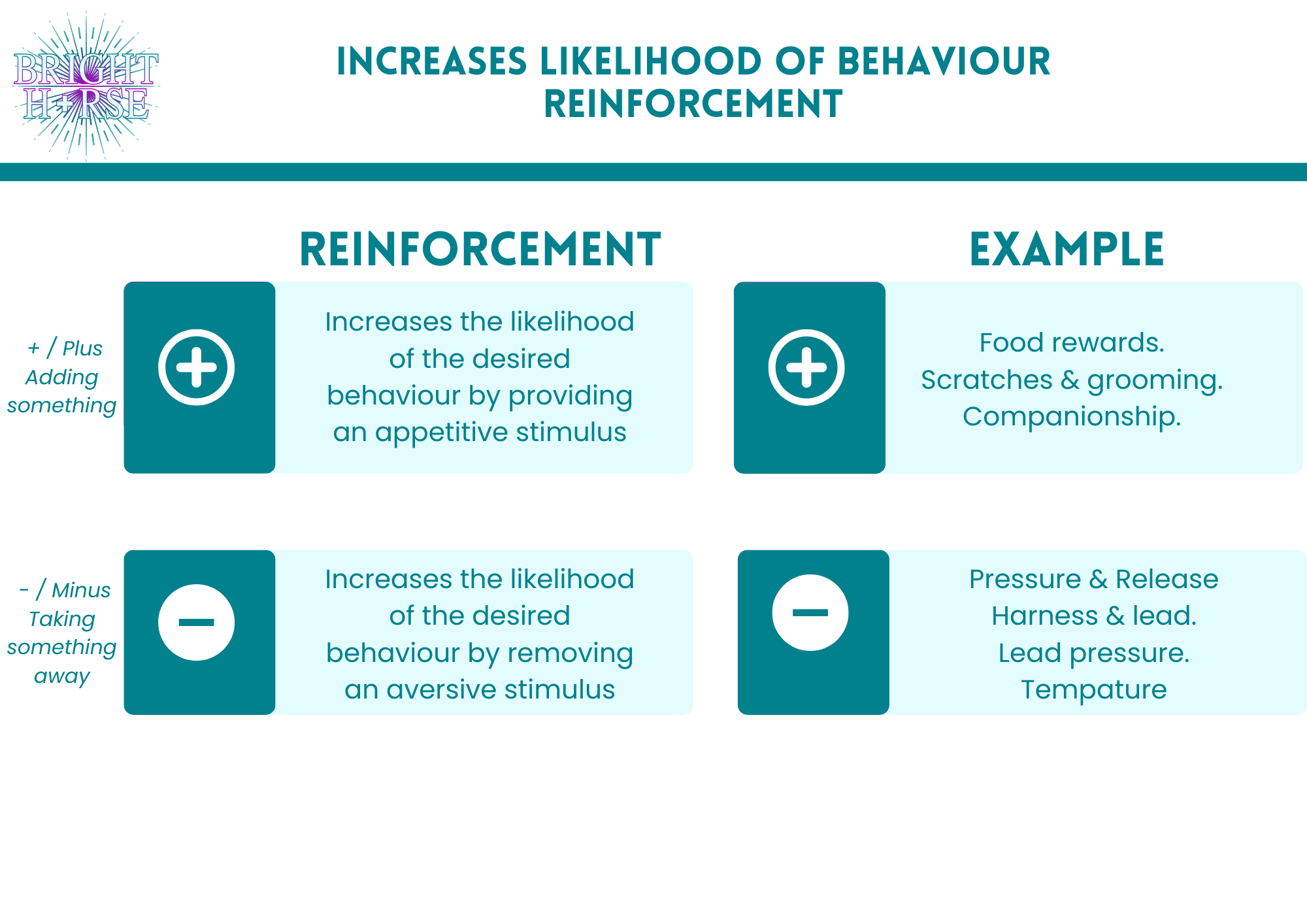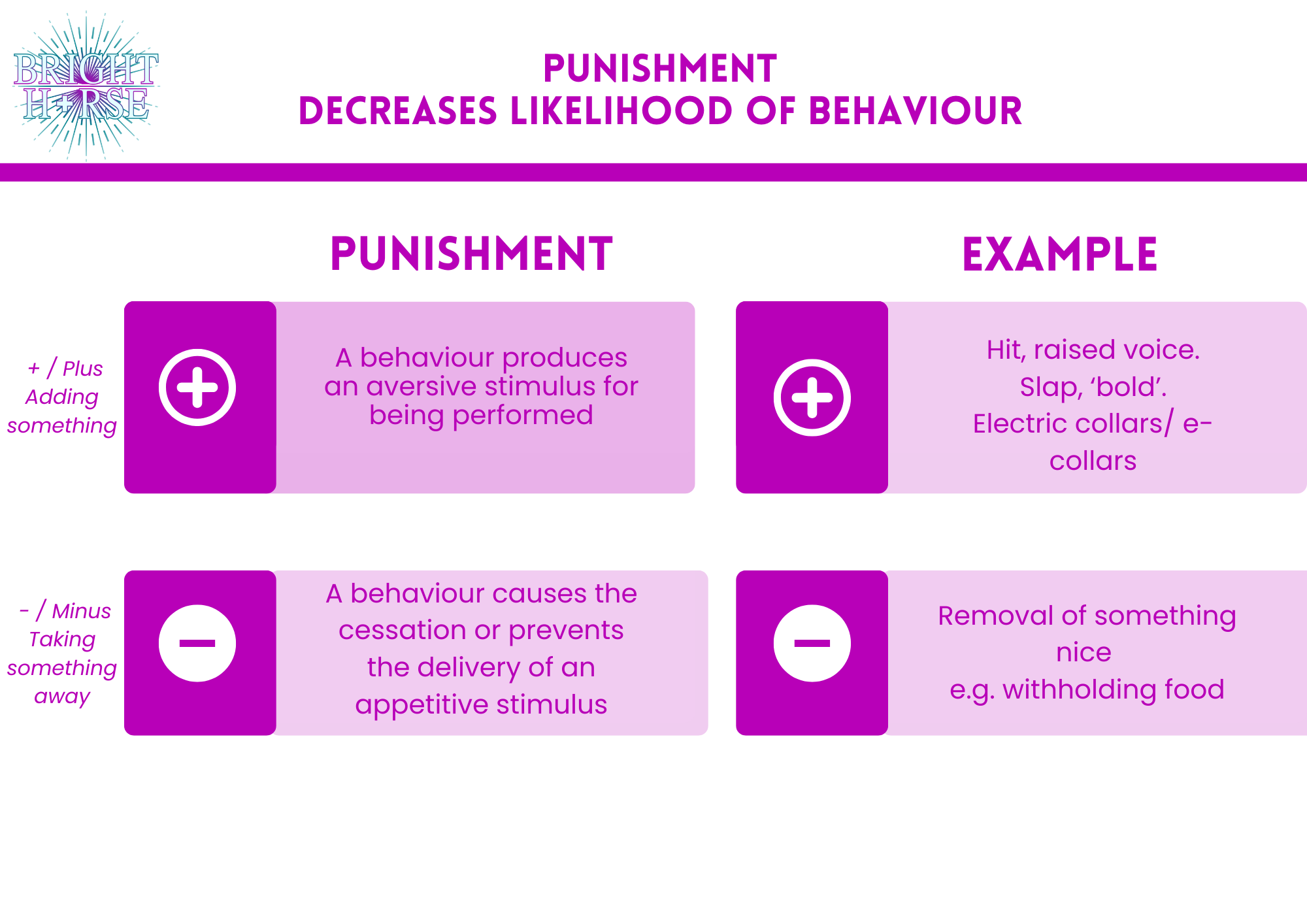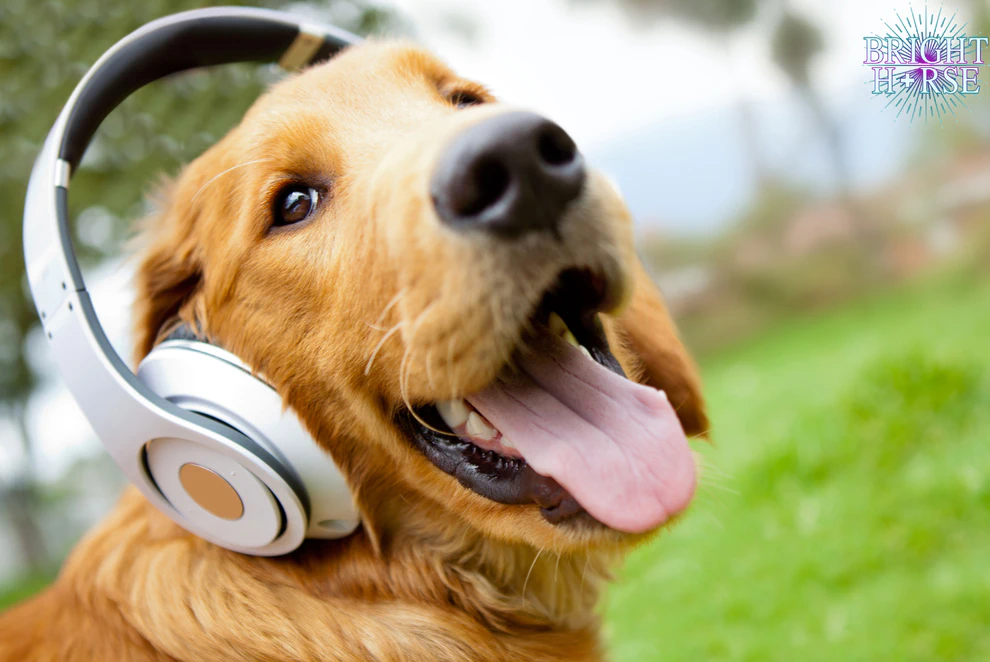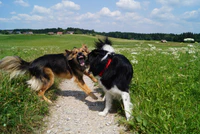Listen to the Blog-Cast:
Why It’s Really About Communication and Compassion
Does your dog ignore you when you call them? Leads you on a merry chase while you call them over and over again. “They know I want them to come back and JUST won’t listen!” Followed by cursing their name!
Or do they pull you around like they’re your personal trainer and think you need “arm day”? You might go to the gym for this, but you don’t need their “help” when you just want a nice evening walk.
Or maybe your dog gets some serious air time, jumping on visitors, strangers, or even counter surfing. It’s like they were born to be a bird not a dog, and somehow “Get down!” seems to mean “jump more” to them.
You’re not alone. Many guardians describe these challenges as a lack of obedience. They’ll say: “They know what to do but they won’t listen to me! They’re doing it on purpose.” And sometimes, it can really feel that way.
But here’s the truth: what most people call obedience training is actually about learning how to communicate effectively with your dog. And the best part about reframing it this way is that we have lots of ways to improve communication so your dog can actually listen better. It doesn’t involve force or punishment, and it means you can stop feeling frustrated by constantly shouting their name or yelling “Get down!”. The secret is rooted in compassion, science, and understanding.
Why the Word ‘Obedience’ Can Be Misleading
The word obedience suggests control and compliance the idea that dogs must do as they’re told. But dogs aren’t robots. They’re living, feeling companions who respond to their environment, their emotions, and the clarity of the communication they receive. Let’s take a human example: say you’re in a long office meeting but you really need to use the bathroom. You excuse yourself and leave. Were you being disobedient by not staying put in the meeting? Of course not you were simply responding to a genuine need.
When people hear “obedience,” they often imagine dominance-based training, strict rules, or harsh corrections. This can create a pressure-filled relationship where both guardian and dog feel stressed. Back to our human example: imagine if you stood up to go to the bathroom and someone barked “Sit back down!” You might obey, but you’d feel uncomfortable, distracted, and probably resentful. You might comply outwardly, but your focus and trust in that person would be damaged. Dogs feel the same way when training is about force rather than communication.
Modern, science-based training takes a very different approach. Instead of demanding obedience, we focus on cooperation. The goal is to teach dogs useful life skills in a way that’s fair, consistent, and compassionate. It’s not about making them comply at all costs it’s about creating a shared language so they can understand what we want, and we can understand their needs in return. Think back to the meeting example: we can politely ask, “Can I leave for the bathroom?” and most decent folks will understand. That’s communication of needs and that’s exactly the kind of respectful dialogue we want to create with our dogs.
How Dogs Really Learn
When it comes to training and learning, we often talk about learning theory. Simply put, this is the science of how animals learn, horses, cats, dogs, humans and even whales! It tells us that dogs, like people, repeat behaviours that are reinforced or rewarded. They thrive on predictability and consistency, when they know what to expect, their stress levels stay low, learning becomes easier, and life together runs more smoothly.
Think about how you feel when your daily routine changes suddenly, say, if your paycheck date moved around randomly each month. That unpredictability creates stress. Dogs feel the same way. Consistency helps them feel secure, which opens the door for learning.
Here’s the magic principle, behaviours that are rewarded are repeated.
If your dog jumps up on visitors and gets cuddles, they’ll keep doing it.
If you teach them to sit instead, and sitting earns them cuddles, they’ll choose that instead.
This shift from stopping unwanted behaviour to teaching new, better behaviours is at the heart of compassionate training. We don’t just say “no” we show them what to do instead.
The Four Quadrants (Made Simple)
Behaviour scientists use a framework called the “Four Quadrants of Learning.” You don’t need to know all the jargon, but here’s what matters:
Positive Reinforcement (+R): Adding something nice when your dog does the right thing (e.g. treats, play, affection). This is the most effective and welfare-friendly way to train.
Negative Reinforcement (–R): Removing something unpleasant when your dog does the right thing (e.g. pressure released when they stop pulling on lead). This is less common in modern, reward-based dog training, but you may see it in some contexts.
Punishment (–P or +P): Adding or removing something to reduce behaviour (e.g. shouting, leash jerks, withholding affection). While punishment might stop a behaviour in the short term, it carries risks: it can increase stress, cause fear, and damage trust between you and your dog. At Bright Horse & Hound, we avoid punishment-based methods because we prioritise welfare and long-term success.


Our focus is on positive reinforcement, building a respectful and trusting bond between guardian and dog. When your dog enjoys learning, they’ll be more eager to practice skills with you, and your relationship will flourish.
Why Compassionate Training Works Best
Positive training doesn’t just “get results”, it changes how your dog feels, feeling good about learning makes learning happen faster and stick around longer. Reward-based methods trigger dopamine, the brain’s “happy hormone,” making learning enjoyable and reinforcing your bond. Instead of training being stressful, it becomes a shared, joyful experience.
What we also don’t know about dopamine, it’s not just a happy hormone but also a hormone used by the brain to support learning new skills.
For example, a dog that once dreaded being called inside might now race happily toward you because coming when called always leads to something wonderful, a treat, a game, or affection. This isn’t obedience through fear; it’s communication through joy. Our dogs should want to be with us.
When dogs are eager, confident, and understood, they’re far more likely to “listen.” That’s not obedience, that’s cooperation and understanding. And as a guardian, you’ll feel more relaxed and supported, knowing that your dog is learning in a way that’s kind and effective.
And let’s face it, less frustating!
Everyday Examples of Compassionate Training in Action
Loose lead walking: Your dog wants to go for a walk and is excited to be out, meeting other dogs, people, and sniffing everything along the way. The natural reaction might be to yank on the lead to stop the pulling. But the dog keeps pulling — not because they’re disobeying you, but because the walk itself is a huge reward. Regardless of how much you pull, they will instinctively pull back. Instead of yanking the lead, we teach a different approach. By rewarding calm steps at your side, your dog learns over time that walking politely brings even more good things than pulling ever could.
Recall: Often we end up chasing our dogs when we try to call them back. From their perspective it feels like a fun game — “Yay, my human is coming with me, this is great!” They’re not ignoring us out of disobedience, they genuinely think it’s playtime. Instead of shouting when our dog runs off or running after them, we can flip the script. By turning recall into a game and using rewards, we make coming back the most exciting and rewarding part of the adventure.
Jumping up: Dogs who jump on people often get what they’re after — a cuddle, eye contact, or some kind of attention. Dogs who jump on counters might even get food. In both cases, the behaviour is rewarded, so it gets repeated. Instead of scolding, we redirect the behaviour by teaching an alternative like sitting. When sitting earns them the same rewards — attention, affection, or treats — they quickly learn that this polite choice is more effective than jumping.
Each of these examples shows how training can move away from control and into collaboration. The result? A calmer, happier household and a stronger bond.
A Kinder Way Forward
If you’re struggling with training challenges that leave you feeling embarrassed or frustrated, please know you’re not alone. And it’s a normal human response when we feel like we aren’t being listened to.
But know that every dog can learn new behaviours, and every guardian can learn how to teach them. It doesn’t matter if your dog is a puppy just starting out, or an older dog with long-standing habits change is possible.
The key is compassion, consistency, and the right support. With clear guidance and a positive approach, you’ll see your dog’s behaviour shift in ways that strengthen your relationship and make daily life smoother.
👉 Download my free checklist: “5 Things Every Dog Guardian Should Know About Training & Behaviour” to start building the relationship you’ve always wanted with your dog rooted in understanding, not obedience.
5 Things Every Dog Guardian Should Know About Training & Behaviour
Does your dog pull on the lead, ignore you when you call, or jump on visitors? You’re not alone… These are some of the most common challenges guardians face — and they can leave you feeling frustrated, embarrassed, and unsure what to do next.
The good news? These behaviours aren’t signs that your dog is “stubborn” or “disobedient.” They’re simply ways of communicating. With the right approach, you can transform frustration into understanding and build a calmer, happier relationship with your dog.
My free guide, “5 Things Every Dog Guardian Should Know About Training & Behaviour”, will show you how. Inside, you’ll discover simple, science-based principles that explain why dogs do what they do — and how you can teach them new behaviours kindly and effectively.
This quick, compassionate checklist will help you:
- Understand why your dog repeats certain behaviours
- Learn the role of emotions in behaviour
- Use consistency and reinforcement to your advantage
Take the first steps toward easier walks, better recall, and calmer greetings
Sign up below to get your copy and receive a supportive 6-part email series with practical tips to help you and your dog feel more connected and confident together.




